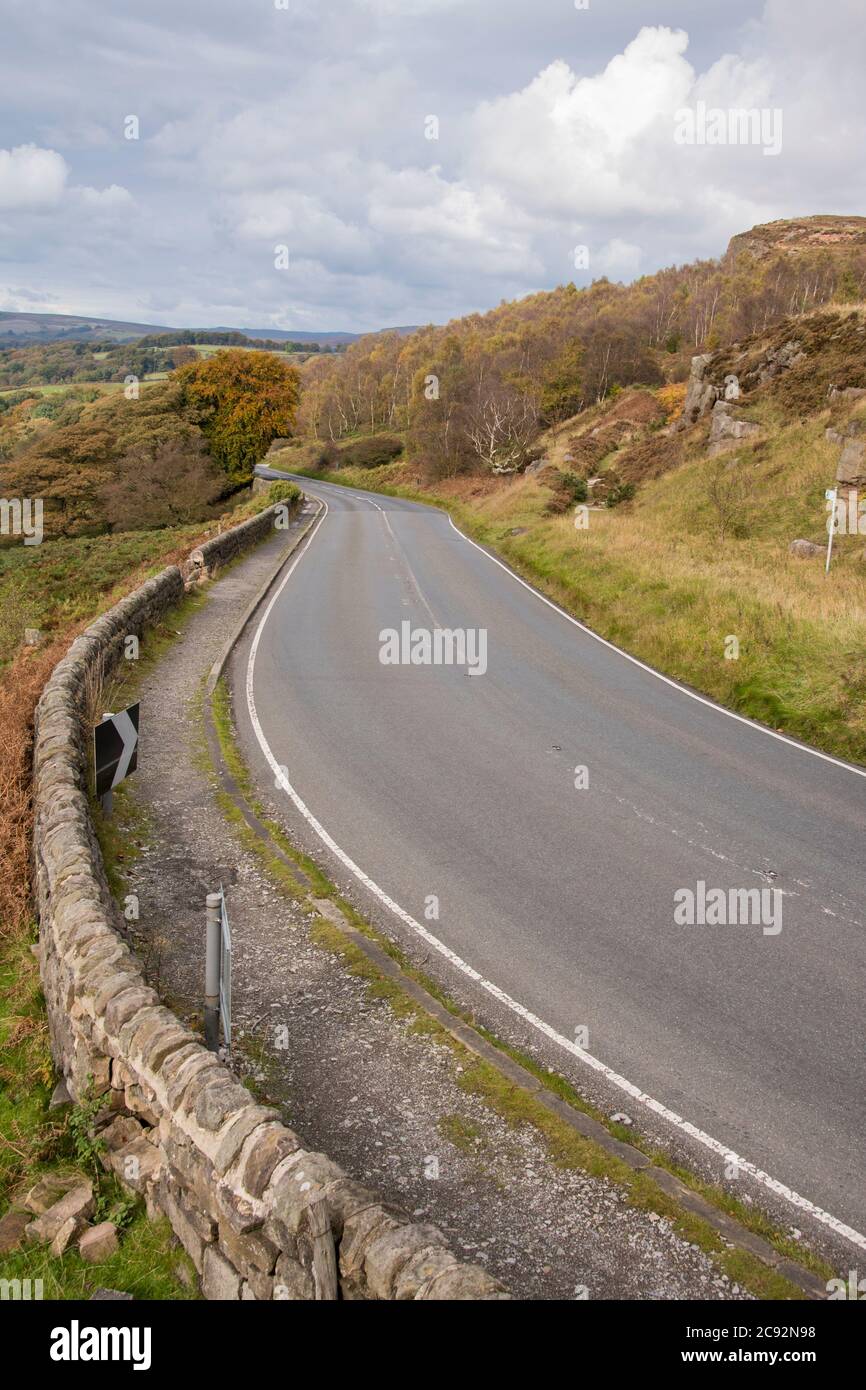Overlooked Road Infrastructure Stocks: The Pothole to Profitability
investing in infrastructure might not always grab the headlines like the latest tech giants or meme stocks, but it’s a bedrock of any functioning economy. Roads, bridges, and transport networks are the arteries that keep commerce flowing and communities connected. While the spotlight often shines on massive, well-known construction firms, there’s a whole world of “overlooked” road infrastructure stocks that could be fantastic opportunities for the savvy investor. These are the companies quietly doing the heavy lifting, often flying under the radar, and potentially offering solid long-term growth and stability.
The beauty of road infrastructure lies in its consistent demand. Governments, whether local or national, are constantly pouring money into maintaining, repairing, and expanding their road networks. It’s a non-negotiable expense. From fixing everyday potholes to building massive new highways, the need for these services is perpetual. This creates a predictable revenue stream for companies in this sector, making them less susceptible to the wild swings often seen in other industries. And with many nations, including the UK, facing ageing infrastructure and a renewed focus on “levelling up” or similar investment initiatives, the tailwinds for this sector are considerable.
But why focus on “overlooked” stocks? Well, these are often the gems that the broader market hasn’t fully appreciated. They might be smaller companies, niche players, or firms operating in less glamorous corners of the infrastructure world. This can translate into more attractive valuations and greater potential for capital appreciation as their true value becomes more apparent. Finding these hidden champions requires a bit of digging, moving beyond the obvious names and looking at the entire ecosystem of road construction and maintenance.

The Unsung Heroes of Asphalt and Aggregates
When we talk about road infrastructure, it’s not just about the big builders. Think about all the materials that go into a road – the asphalt, concrete, aggregates (crushed stone, gravel, sand), and even the specialist machinery. Companies that produce and supply these essential components are often crucial to the entire sector, yet their names might not be as widely recognized. These are often B2B (business-to-business) companies, meaning their customers are other businesses and government entities, rather than the general public. This can make them less visible but no less vital.
The Niche Navigators: Specialist Services and Technology
Beyond materials, there’s a whole host of specialist services that are integral to road infrastructure. This could include companies focused on road markings, traffic management systems, surveying and engineering, or even companies providing advanced software for infrastructure planning and maintenance. As technology plays an increasingly significant role in modern infrastructure, firms that innovate in areas like smart roads, sensor deployment, or efficient maintenance scheduling could be on the cusp of significant growth. These niche players often have unique expertise and a strong competitive advantage within their specific area, making them highly resilient.

Geographical Considerations: Local Strength, Global Impact
While global infrastructure giants exist, many road infrastructure companies have a strong regional or national focus. This can be an advantage, as they often have deep relationships with local governments and a detailed understanding of specific regulatory environments and project pipelines. For investors looking for a more diversified approach, considering companies with strong positions in different geographical markets can be a smart move. For example, a company specializing in bridge repair in one region might be less susceptible to economic fluctuations in another.
The Maintenance Mindset: Ongoing Revenue Streams
Building new roads is exciting, but the real work, and often the most consistent revenue, comes from maintaining existing infrastructure. Roads degrade over time due to weather, traffic, and general wear and tear. This necessitates regular repairs, resurfacing, and upkeep. Companies that specialize in road maintenance, rather than just new construction, benefit from these recurring revenue streams. Their business models are often more stable and less reliant on the boom-and-bust cycles that can sometimes affect large-scale new projects. This focus on long-term contracts and essential services can make them particularly attractive as overlooked opportunities.
The Digital Backbone: Software and Data for Roads
We often think of roads as purely physical assets, but increasingly, they have a digital twin. Companies developing software for infrastructure management, traffic flow optimization, digital mapping, and even predictive maintenance using AI are becoming increasingly important. These aren’t your typical “construction” companies, but they are absolutely critical to the efficiency and longevity of modern road networks. Their intangible assets – their intellectual property and data insights – can provide a significant competitive moat and potentially high-profit margins. As smart city initiatives gain traction, the demand for these digital solutions will only grow, presenting a fertile ground for overlooked investment opportunities.
The Equipment Providers: Digging Deeper than Caterpillar
When you think of construction equipment, names like Caterpillar immediately come to mind. But there are many other companies, often smaller and more specialized, that provide the machinery essential for road building and maintenance. This could include manufacturers of specific paving equipment, road rollers, grading machines, or even specialized vehicles for utility work along road networks. These companies are direct beneficiaries of increased infrastructure spending, as their products are in constant demand. They might not be as glamorous as the headline-grabbing mega-projects, but they form the backbone of the industry.
The Environmental Angle: Green Infrastructure Growth
With a growing global emphasis on sustainability, companies involved in “green” road infrastructure are emerging as a compelling area for investment. This could include firms using recycled materials in asphalt, developing permeable paving solutions for better water management, or implementing energy-efficient lighting and signage. As environmental regulations tighten and public demand for sustainable practices increases, these companies are well-positioned for long-term growth. They offer a unique blend of essential infrastructure services with a positive environmental impact, making them attractive to a wider range of investors.
Value Traps vs. Hidden Gems: Due Diligence is Key
It’s crucial to distinguish between a truly “overlooked” stock and a “value trap.” An overlooked stock is undervalued because the market hasn’t fully recognized its potential. A value trap, on the other hand, is cheap for a good reason – perhaps declining fundamentals, poor management, or an unsustainable business model. Thorough due diligence is paramount. This involves looking at financial statements, understanding the company’s competitive landscape, assessing management quality, and evaluating the long-term industry trends. Don’t just buy a stock because it’s cheap; understand why it’s cheap and if that “why” represents an opportunity or a warning sign.
The Impact of Government Spending and Policy
Road infrastructure is heavily influenced by government spending and policy. Large-scale infrastructure bills or national investment plans can provide significant boosts to the sector. Keeping an eye on government commitments to infrastructure development, both domestically and internationally, can help identify potential growth areas. However, it’s also important to be aware of political cycles and potential changes in spending priorities. A stable and consistent commitment to infrastructure is generally a positive sign for companies in this space.
The Long Haul: Patience is a Virtue
Investing in road infrastructure stocks, especially those that are currently overlooked, is often a long-term play. These aren’t typically “get rich quick” schemes. The returns might be steady and consistent rather than explosive. However, for investors seeking stability, reliable dividends, and exposure to a truly essential sector, these companies can be excellent additions to a diversified portfolio. The tangible nature of their work – building and maintaining the very fabric of our transportation system – offers a sense of foundational investment.
Conclusion
While the allure of high-flying tech stocks often dominates investment conversations, the quieter, more fundamental world of road infrastructure offers compelling opportunities. By looking beyond the obvious names and delving into the overlooked corners of this sector – from materials suppliers and specialist service providers to technology innovators and maintenance experts – investors can uncover hidden gems with significant long-term potential. The constant need for well-maintained roads, coupled with increasing government investment and a growing focus on sustainable practices, creates a robust environment for these essential businesses. Patience, thorough research, and a keen eye for genuine value are the keys to paving a profitable path in the overlooked world of road infrastructure stocks.
5 Unique FAQs After The Conclusion
1. How can I identify truly “overlooked” road infrastructure stocks rather than just struggling companies?
Identifying genuinely “overlooked” stocks requires digging deeper than just a low price. Look for companies with strong fundamentals (healthy balance sheets, consistent revenue, and positive cash flow) that may be undervalued due to their smaller market capitalization, niche focus, lack of broad analyst coverage, or operating in less flashy segments of the infrastructure market. Compare their valuation metrics (like P/E ratio, P/B ratio) to industry averages and their historical performance. Also, research any recent catalysts or upcoming projects that could bring them more attention.
2. Are there specific types of road infrastructure projects that offer better investment potential than others?
While all road infrastructure is important, certain segments might offer stronger growth. For instance, projects related to smart cities, electric vehicle charging infrastructure along highways, or the adoption of sustainable materials in road construction could present higher growth potential due to emerging trends and technological advancements. Similarly, companies focused on essential maintenance and repair work often have more predictable and recurring revenue streams compared to those solely reliant on new, large-scale construction projects.
3. What are the key risks associated with investing in road infrastructure stocks, even the overlooked ones?
Even overlooked road infrastructure stocks carry risks. These can include dependence on government funding and policy changes, economic downturns leading to reduced public spending, rising material costs (like asphalt or concrete), labor shortages, and unexpected project delays or cost overruns. For smaller, overlooked companies, liquidity risk (difficulty buying or selling shares) and less robust financial reporting might also be considerations. Geopolitical instability can also impact global supply chains and project execution.
4. How do environmental regulations or the push for “green” infrastructure impact these companies?
Environmental regulations are increasingly shaping the road infrastructure sector. This can be both a challenge and an opportunity. Companies that adapt by adopting sustainable practices, utilizing recycled materials, and developing environmentally friendly solutions (like permeable pavements or quieter road surfaces) are likely to thrive. Those that resist or fail to innovate in this area may face higher compliance costs or lose out on new project bids, so it’s important to assess a company’s commitment to and investment in green initiatives.
5. Is it better to invest in individual overlooked stocks or consider an infrastructure-focused ETF?
The choice between individual stocks and an ETF depends on your risk tolerance and investment strategy. Investing in individual overlooked stocks offers the potential for higher returns if you pick the right ones, but it also comes with higher specific company risk. An infrastructure-focused ETF (Exchange Traded Fund) provides broader diversification across many infrastructure companies, reducing individual stock risk. However, it means you’ll also be exposed to the performance of larger, more recognized firms, and the potential for outsized returns from a single, truly overlooked gem might be diluted.


